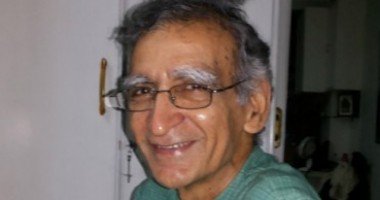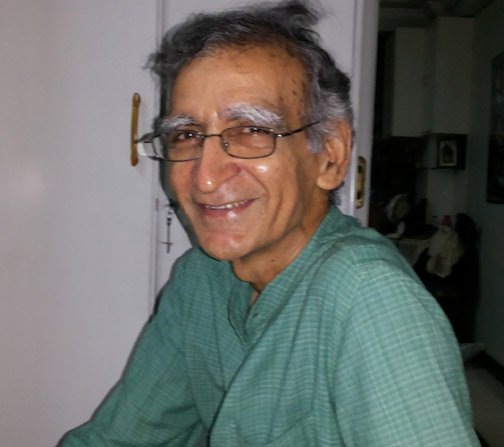Articles features
India Democracy at the Crossroads under Current Political Dispensation

Asghar Ali Engineer Memorial Lecture: Anniversary of- Chavi-Wall Newspaper Bhuvaneshwar, Jan 29
2015
I begin this lecture paying tribute to my very dear friend, Dr. Asghar Ali Engineer, with whom I had the rare privilege of working with for close to two decades. Dr. Engineer was a unique scholar-activist, totally committed to the dream and vision of a humane society that honours the values of diversity and where human rights for all are the defining point.
In this regard, he may have been among the first persons who realized the dangers of divisive communal politics. It was he who set the trend seeking the causal factors behind communal violence, doing his own meticulous investigation after such riots. He contributed massively to reforms that took place in the Bohra community, on the issues of secularism and finally, in the interpretation of Islam. We need to learn a lot from him in order to strive for a society that values peace, amity and compassion.
Where are we standing today? What are the major threats to Indian democracy, today, even more menacing with the coming of the Modi Government?
The factors contributing to his victory have been several. The unstinted support given to him by India’s corporate; the fanatical zeal of the RSS and its lakhs of volunteers; the role of a corporate controlled media; the false projection of the ‘Gujarat model of development’; the polarization of society along religious lines; and last, but not the least, the discrediting of the Congress through the campaigns launched by Anna Hazare, Baba Ramdev and Arvind Kejriwal that culminated in the formation of AAP party.
The promise of Achhe Din – Good Times – has vanished into thin air. Despite the steep fall in the prices of crude oil in the World, the overall ‘cost of living’ continues to going up. The promise that all the black money stacked abroad will be brought back within six months or so and that we would be surprised to see 15 lakh deposited in our accounts, has been forgotten. The pattern of (good?) governance is only visible in the centralization of power around one person, Modi. Gradually the cabinet system of governance is giving way to one man’s autocratic ways, with secretaries of Government departments reporting directly to the PM.
On the domestic front obstacles are being created with the funding of NGOs, Greenpeace being the major victim. The welfare schemes begun by the previous Government have come under the chopping block. The corporate world that richly funded Modi’s campaign, smiles all the way to their coffers, given the ‘no holds barred’ permissions for reckless industrialization that bypass all environmental, social and economic controls. There has been a great amount of pomp and show on display, and around this much hype created around the persona of the new prime minister.
The losers in all of this have been the weaker sections of society. The ‘labour reforms’ brought in by this government will do away with whatever little protective clauses are there for them. The land acquisition by industrialists is being made easy at the cost of those who own the lands. The other social welfare schemes needed for the poor, the right to food and health are under the threat of being done away with too.
The intimidation of religious minorities has been stepped up. One central minister Sadhvi Niranjan Jyoti was emboldened enough to call all non-Hindus as haramzade, illegitimate. Another saffron robed BJP leader went on to glorify Nathuram Godse for his ‘patriotism’ while also advising Hindu women to produce more children. Godse, the murderer of Mahatma Gandhi has now been glorified by Hindutva elements, emboldened as they have been by the current government. Christmas Day was declared as ‘Good Governance Day’ in a move to undermine this festival. Demands are made that the Gita, the Hindu holy book be made the ‘national book’ of India. Attacks on churches and mosques have been taking place at regular intervals. The statements that we are Hindus and this is a Hindu Rashtra have become more and more assertive.
Through all this Narendra Modi maintains a studious silence, being as all this is, an integral part of the agenda of the BJP and its parent organization, the RSS. Their basic goal is to take the country towards the narrow concept of Hindu nationalism, a sectarian nationalism not different from either Muslim extremism or Christian fundamentalism.
In this context, it helps to recall that the streams of ‘religious nationalism’ in India came up as a reaction to the rise of Indian nationalism, when the feudal lords and kings came together to form the United India Patriotic Association (UIPA) in 1888, later joined by elites from the middle class and the upper castes. From the UIPA, on one side emerged the Muslim League and on the other, the Hindu Mahasabha, both positing a religious nationalism.
Taking up the goal of a Hindu nation formulated by the Hindu Mahasabha’s Savarkar, the RSS was formed in 1925 and began indoctrinating in the ideology that India was a ‘Hindu’ nation, where Christians and Muslims were foreigners. This was in sharp contrast to the inclusive notions of nationalism articulated by other leaders from Mahatma Gandhi to Bhagat Singh to Dr. Ambedkar.
What must be remembered is that the communal organizations kept themselves aloof from the freedom movement and chose instead to spread hatred, bringing communal violence to the fore. Such violence only increased in intensity and we collectively suffered a massive tragedy in the form of partitioning the country that saw suffering of severe proportion on both sides, mass migration and unprecedented violence.
It helps to keep in mind that the colonial British policy of ‘divide and rule’ was ably assisted by communal organizations on both sides of the fence. It was an RSS-indoctrinated pracharak, a preacher, Nathuram Godse who murdered Mahatma Gandhi – the first major attack of Hindu nationalism on a broader Indian nationalism.
While the RSS on the one hand ignored the freedom movement, on the other hand it its swayamsevaks in the narrow ideology of Hindu nationalism, and it was these volunteers, in turn, who infiltrated the police, bureaucracy and other components of state machinery. They also spawned subordinate organizations – the Akhil Bharatiya Vidyarthi Parishad, Vanvasi Kalyan Ashram, Vishwa Hindu Parishad, and Bajrang Dal; women relatives of RSS supporters formed the Rashtra Sevika Samiti under the guidance of RSS.
And right through this, the RSS harped on issues of ‘identity’ – like the one related to ‘cow protection’; intimidating religious minorities with the ‘Indianization of Muslims’ campaign, hinting Muslims were not Indian.
By the time the 80s broke, the Hindutva battalion’s word of mouth propaganda, aided by sections of the media and the re-writing of history in our school books, led to ‘social common sense’ with Muslims presented in negative light. This presence was enhanced along even narrower lines when they shamelessly demolished the Babri Masjid, rolling the Rath Yatra of Advani and leaving violence in its wake.
This only ensured the violence would intensify. The so-called ‘identity’ was now projected as the only. This deepened the polarization along religious lines, leading to the massive violence in Mumbai, Surat, and Bhopal in 1992-93, culminating in the now infamous Gujarat violence in 2002.
It was not only Muslims being targeted. From the late 80s, the other minority community, Christians, were also brought into the vortex of communal violence, projected as indulging in ‘conversions’. This divisive violence in Adivasi areas led to the brutal killing of Pastor Graham Stains along with his two innocent sons in 1999, and later to the horrific killings in Kandhamal in 2008.
All this is nothing more than what was articulated by the major RSS ideologue, M.S. Golwalkar, who claimed that India was a Hindu Rashtra from times immemorial, that religious minorities should live at the mercy of majority or be totally denied their rights as citizens.
The year 2015 marks is the second time that BJP is in the seat of power. When it ruled in 1998, with a coalition NDA, the BJP as a party did not have simple majority, so its agenda was low key. It was not quite though. It communalized the school text books, ‘saffronized’ education, and gave importance to faith based subjects like Astrology and Paurohitya, the training of Hindu priests. It also tested the waters to change the Constitution and formed the ‘Constitution Review Committee’.
With the BJP now having a simple majority, their agenda unfolds in an uninhibited manner. They have wrought changes in all national bodies, people with their communal mindset now occupying positions of importance. One Prof. K. Sudarshan Rao, head of the Indian Council of Historical Research, while a nonentity among professional historians, holds that the caste system was beneficial and presents the complex mythology of the Ramayana and Mahabharata, the two great epics, as lived history. Sanskrit is being promoted despite the fact that it was never a language of masses.
While the promotion of a scientific temper is the guiding principle of our Constitution, this government now promotes an orthodox, obscurantist ideology as being central to the arena of science. We are now told that ancient India had all the technology in aviation science and plastic surgery – all intended to show primacy over current developments in science and technology. India has contributed much by way of the works of Charat, Sushrut and Aryabhat but to claim ancient Indian science more advanced is merely to assert ‘we are the best’, a path in tune with the retrograde direction of the Hindutva brigade.
A democracy has to ensure that the values of liberty, equality and fraternity are paramount. With the Modi Government’s Hindutva agenda, they have now attempted to tamper with the Constitution by removing the words ‘Secularism’ and ‘Socialism’. The total bypassing of the concerns of the minorities and those is a grave danger to the very values which were at the core of India’s freedom movement. We are now at that crucial juncture of history where the very existence of the Indian Constitution is at stake.
We need to wake up in right earnest and face this threat. What is required is a multi pronged movement based on the rights and concerns of Dalits, women, workers, Adivasis and minorities in particular. We need to form alliances and platforms to coordinate our campaigns for the defence of our democratic rights. All those standing for democracy and secularism need to come together in solidarity. We have to hold hands and march together to protect our democracy. We need to work towards isolation of communal forces by pushing for alliance of non communal political formations. Sectarian politics, Hindu Nationalism, is akin to that of fascist and fundamentalist regimes, having some features of one and some features of the other.
In such a dispensation, the democratic space stands to lose. Symptoms of this are visible in the banning of some books and introduction of others, like penned by RSS ideologue Dinanath Batra.
It is therefore more important than ever before that the
space in the social, print and TV media be reclaimed. We must resolve to work
seriously to promote diversity, pluralism and those liberal values which go
with our human and democratic values.




































